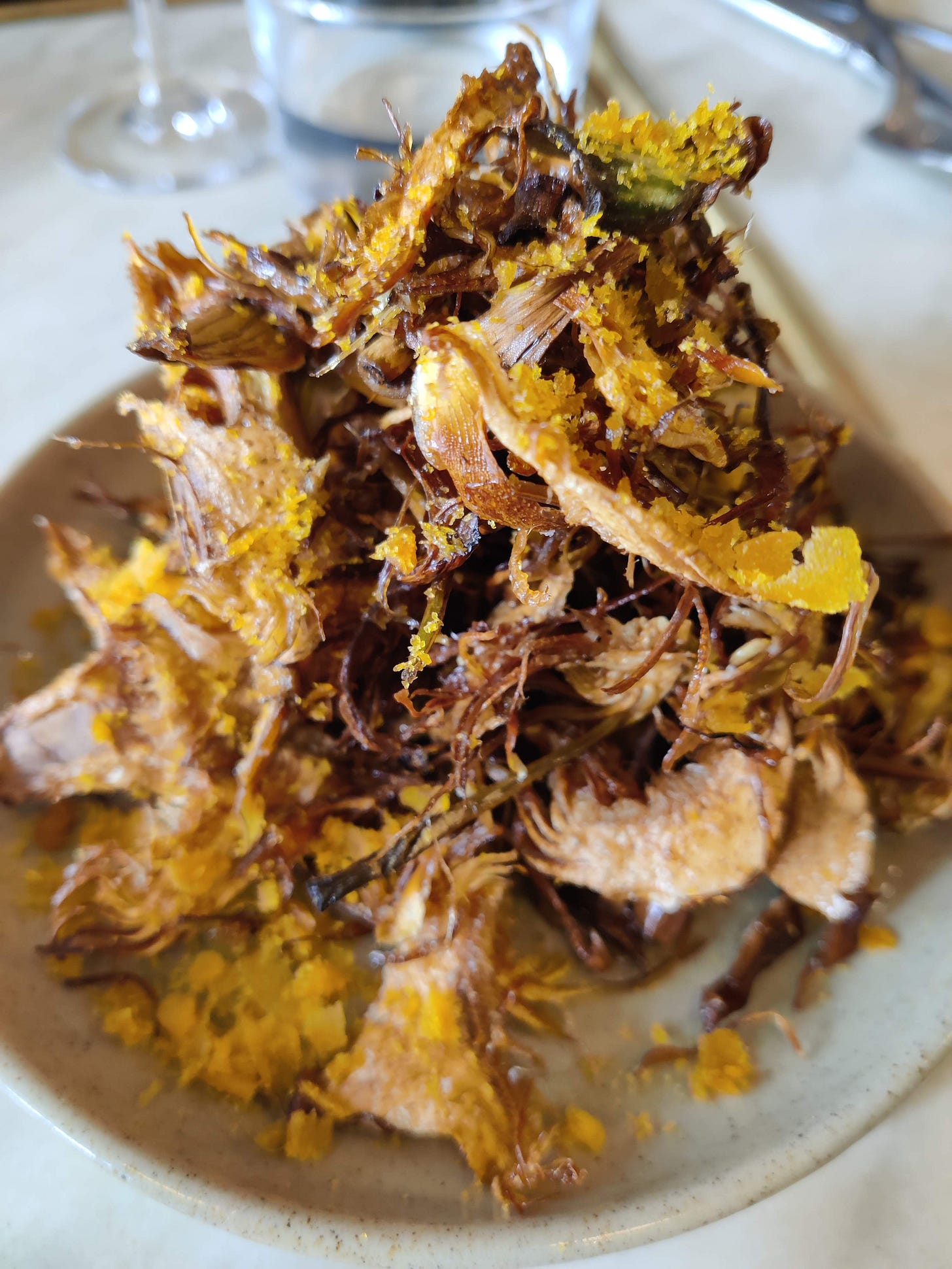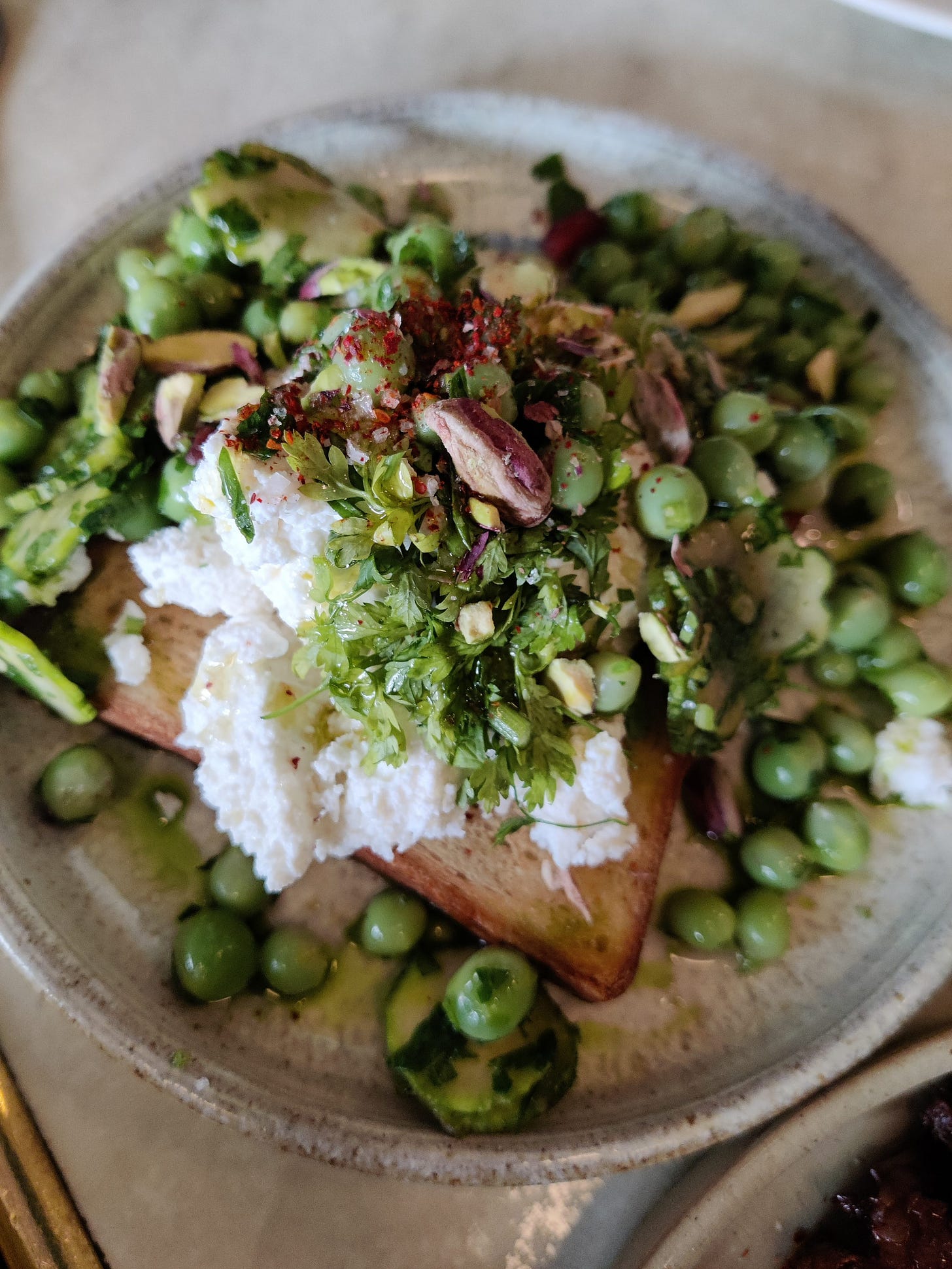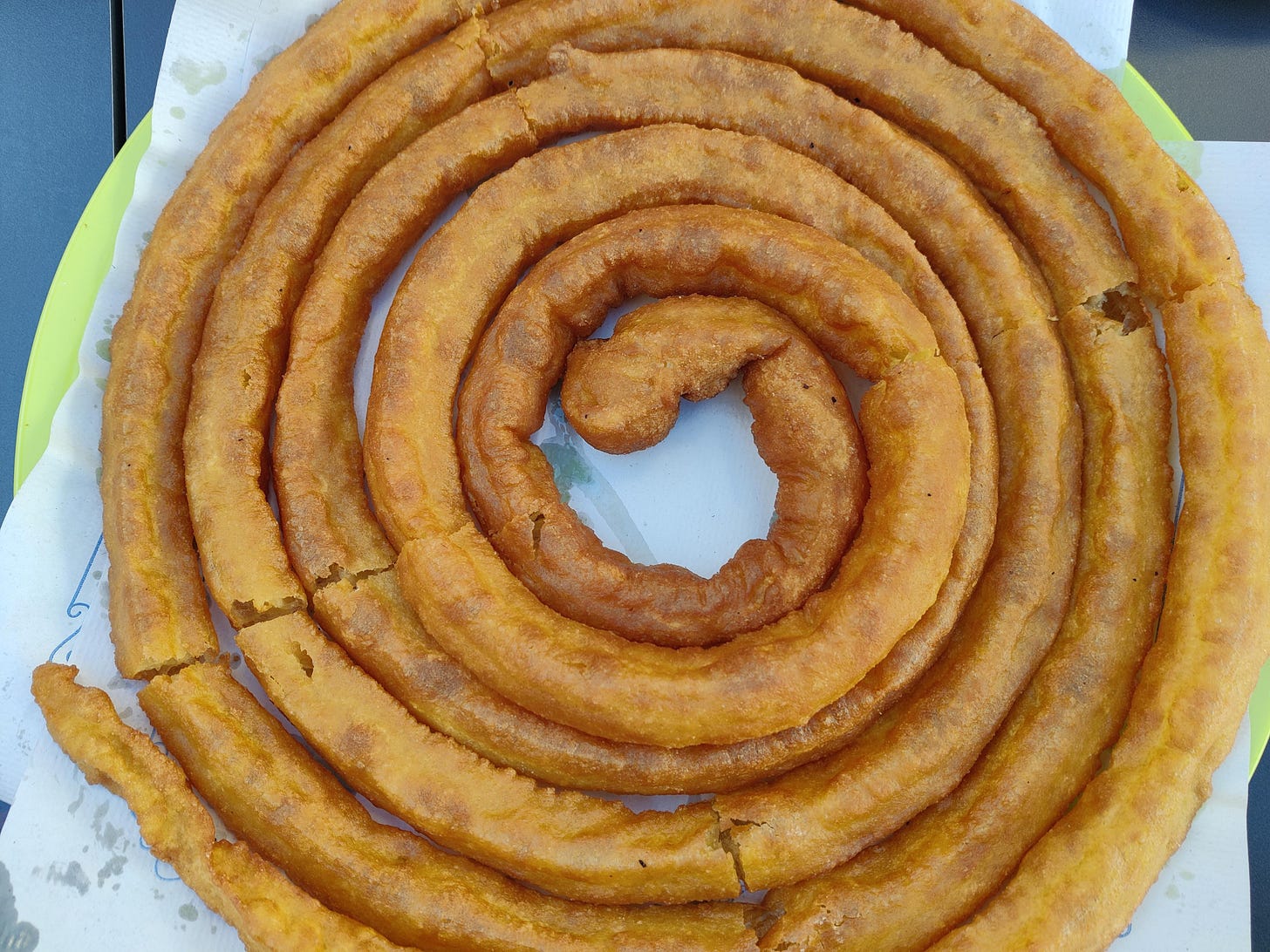Thin’s Happy Pickings
Because we all need a cheer from time to time
This week, I want to share stories of people, projects, and ideas that inspire me and/or bring me joy.
Don’t get me wrong. There are plenty of bad news I could focus on: worrying figures from the new Global Report on Food Crisis, fossil fuel lobbyists outnumbering scientists, indigenous peoples, and some national delegations at the plastic treaty negotiations, the European Parliament’s vote to dismantle environmental safeguards for agricultural subsidies (taken under an emergency procedure and without debate). The list goes on.
But anger alone can’t sustain us. We need hope and inspiration too.
Perhaps this is my antibiotics-fuelled brain speaking: After nursing a nasty cough for over a week, I’m now taking medication, which is helping me tremendously, but is also making me hanker for some good reads.
Thanks to Numlock News and Nature Beat for alerting me to a couple of the stories!
Bucking The Trend
Solomon Islands Tribes Sell Carbon Credits, Not Their Trees - Yale Environment 360
We’ve seen a lot of stories about dodgy carbon credit schemes - from pure greenwashing and outright fraud to the lack of consultation with local forest owners - so it is heartening to read about a project that seems well thought-through, benefits the indigenous peoples and local communities who own the land, and successfully keeps beautiful, biodiverse forests intact.
Jo Chandler’s story about the Sirebe tribe’s efforts to have its forest as the first legally protected area in the Solomon Islands and how the community is now reaping its rewards will make you smile. An excerpt below:
“Pushing through the dense tangle of vines and shrubs to the base of a giant brown terminalia tree, Ikavy Pitatamae demonstrates how baseline data are collected. He passes a measuring tape around the tree’s girth, then aims a laser beam up to where the trunk — likely 200 years in the making — branches out. Loggers would covet this specimen. Pitatamae’s data points verify that this forest contains harvestable and marketable timber that would likely be felled were it not protected — thus demonstrating a core carbon market requirement that the trees would not otherwise exist without this project. The data are also necessary for tallying the forest’s carbon store, or inventory. The magnificent canopy, the forest’s messy middle story of young trees and saplings, and the biomass of its understory would all be just collateral damage to loggers coming for this tree’s trunk. But left standing, they are part of the complex calculus paying the rangers’ wages and supporting others in the tribal communities and villages.”
Penguins in the pond, kiwi in the back yard: how a city brought back its birds - The Guardian
Accompanied by beautiful photos, this is the about how decades of conservation efforts are paying off in Wellington, the capital of New Zealand. Written off 30 years ago as a “biodiversity basket case” after human activity, habitat loss and introduced pests had decimated the city’s birdlife, many native birds population have bounced back to healthy levels, according to Eva Corlett.
It started with an urban ecosanctuary but community buy-in has been key. Now there are a flock of kororā, or little penguin, the world’s smallest, who have formed a colony beneath a resident’s home and the reappearance of wonderful-sounding birds - the tūī, korimako, pīwakawaka, kākā, just to name a few - who provide a dawn chorus in the city’s surburbs.
The Seed Guardians
‘They kept us alive for thousands of years’: could saving Palestinian seeds also save the world? - The Guardian
This article is about Vivien Sansour, an artist, researcher and conservationist whose work I’ve followed for a while now. Vivien is founder of the Palestine Heirloom Seed Library, “a project that began in 2016 to conserve Palestinian heritage and culture by saving heirloom seed varieties and telling the stories and history from which they emerged”.
“Sansour notes that the project is called a seed “library” rather than a seed “bank” for a reason. It’s about partnering with people who will grow things now rather than preserving seeds in some safe vault for a future doomsday, because from Sansour’s perspective, “doomsday is already here”,” wrote Whitney Bauck.
Vivien believes the project could benefit the whole world, because some seed varieties bred by the Palestinians over thousands of years have the ability to grow abundantly in the summer without irrigation, a big deal in a world where water is getting more and more scarce.
The Struggle to Save Heirloom Rice in India - Debal Deb
A wonderful long read from 2019 written by Debal, known as the “Seed Warrior”, about his decades-long efforts to bring back “long-forgotten varieties of the staple crop (that) can survive flood, drought and other calamities”.
“In 1996, with 152 landraces in my collection, I approached the West Bengal State Directorate of Agriculture’s Rice Research Station, where all heirloom rice germplasm is supposed to be conserved. Not only did it refuse to accept and maintain the seeds I had collected, but the director chastised me for pursuing the “unscientific and retrogressive” goal of reviving the forgotten landraces.
“To insist on growing them would mean “going back to the caveman’s age” and condemning farmers to low productivity and lifelong poverty, he said. When I argued that none of the HYVs (high-yielding varieties) can survive on dryland farms without irrigation, on deep-water farms or on coastal saline farms, he assured me that modern transgenics would soon come up with the best varieties for those marginal farms, so I should leave the matter with the experts in agricultural science.”
Pun Fully Intended - Thin Ink
I realise I’m blowing my own trumpet here but I truly loved my visit to an organic farm, a seed bank, and a movement for sustainable farming all rolled into one.
Nearly 20 years ago, Jon “Jo” Jandai bought a weedy and badly degraded land in northern Thailand and transformed it into a vast expanse of lushness. Pun Pun is Thai for “a thousand varieties” and true to its name, the farm now grows more than a thousand plants and also shares the seeds of food crops with anyone in Thailand who requests them.
“Farming used to be our life. But now, farming become the business of the company. We turned to slaves on our land, working hard to make money for the company. What we are left with are debt and bad soil,” he told me. “So I think we cannot survive if we keep moving this way. That's why we feel we need to save seeds.”
The Crusaders
This chef wants to help you cook ‘misunderstood’ vegetables - The Washington Post
Becky Selengut, a chef, podcaster, and cookbook write who teaches “Misunderstood Vegetables” cooking class, is on a mission to get people to cook and eat ugly veggies, wrote Rebekah Denn.
“If a student found nettles horrible and hate-worthy because they were stung by the wild greens on a springtime hike, for instance, Selengut might show them how blanching deactivates the stingers. “They’re the most delicious thing” when blended into pesto or mixed with potatoes into a vibrant nettle colcannon, she said. Haters transform into evangelists.
How is that any different, she asked, from someone meeting someone who’s gay for the first time and realising, “My God, they’re actually funny and they’re lovely and they’re wonderful”?”
The article has a list of commonly misunderstood vegetables and how to get to know them better.
How Chartreuse Finally Made It Big (Again) - Vine Pair
I first learnt of the French herbal liqueur Chartreuse’s history through my fellow Substack Food Fellow Jason Wilson’s superb piece: “Where Has All The Chartreuse Gone?”. I am now the proud owner of a bottle of Chartreuse that I don’t actually know what to do with.
In this story, Aaron Goldfarb wrote how rumours of a Chartreuse shortage caused sales to spike to 1.6 million bottles per year — the highest in over a century - and how the Carthusian monks, who make the liqueur and who have taken a vow of silence, have since opened a visitors centre in Paris.
It also goes deeper into the history of the liqueur, how the American media has covered it, and how it was marketed to American drinkers. It’s a fun read!
“The Plankton Chef” Unveils A New Protein From The Sea - Thin Ink
Allow me to include another one of mine. This one is about Ángel León, a multi-Michelin-starred chef affectionately known amongst his peers and Spaniards as Chef del Mar (The Chef of the Sea) and “The Plankton Chef”.
He unveiled his new passion project at last year’s San Sebastian Gastronomika: Canavalia rosea, a halophyte or salt-tolerant plant, that has 50% protein and 40% carbohydrates. He calls it “marine soybean” and thinks it will become a popular - and sustainable - source of proteins and vitamins in the next 10-15 years
“In the world, it seems like we’ve discovered everything but there’s still a lot of things to discover in the sea,” he told me after his presentation of the marine soybean. “When we see the sea, we just see the fish. But that’s not all. I’m just a chef… but I want to offer new proteins and open people’s minds.”
The Teacher
Braiding Sweetgrass: Indigenous Wisdom, Scientific Knowledge and the Teachings of Plants - Robin Wall Kimmerer
This is a book, it was published in 2015, and I’m not even a quarter of the way through it but I have to recommend it because it is one of the most beautifully written books I’ve ever read.
The author, Robin Wall Kimmerer, is a indigenous botanist, professor, member of the Citizen Potawatomi Nation, and founder and director of the Center for Native Peoples and the Environment.
And the reason I hadn’t finished it in one sitting? Because I want to savour every sentence. It is also teaching me to see the world with new eyes and appreciate the things I’ve taken for granted.
As always, have a good weekend, and please feel free to share this post and send tips and thoughts on mastodon @ThinInk@journa.host, my LinkedIn page, twitter @thinink, or via e-mail thin@thin-ink.net.








